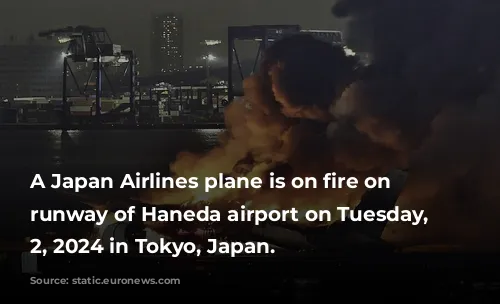A recent crash involving a Japan Airlines (JAL) A350 in Tokyo has brought the use of carbon fibre in aircraft into the spotlight, reigniting concerns about its safety.
The incident, where the A350 collided with a coast guard plane on the runway, has prompted a closer look at how carbon fibre composites, which make up the fuselage of the A350, behave in a fire.
While investigations into the crash are underway, it is important to understand the context surrounding this specific incident.
A Look at Carbon Fibre and Its Role in Aviation
Carbon fibre has revolutionized aircraft design by offering significant weight savings compared to traditional aluminum. This lighter material translates to less fuel consumption and reduced emissions, a significant boon for airlines and the environment.
Composites containing carbon fibre, which are essentially reinforced plastics, have been incorporated into various parts of aircraft for decades. They are commonly used for internal components like floorboards and other structural elements.
The 787 Dreamliner, Boeing’s first aircraft with a fuselage and wings made entirely from carbon composites, launched in 2011. Airbus followed suit in 2018 with the A350, which is now a staple in many airline fleets.
However, the Tokyo incident has brought to the forefront the potential challenges associated with carbon fibre in a fire.
The Fire Factor: Concerns and Considerations
The concern with carbon fibre composites lies in their behavior when exposed to fire. While they are strong and lightweight, they are also susceptible to emitting toxic smoke when burning.
Experts like John Goglia, a former member of the NTSB, highlight the danger of the smoke, which can be harmful to both passengers and firefighters. He emphasizes that the toxic fumes released during a fire can linger long after the flames have been extinguished, potentially posing a health hazard.
The incident in Tokyo has raised questions about whether carbon fibre composites offer the same level of fire resistance compared to aluminum. Some argue that the composite fuselage provided crucial protection in this instance, allowing all passengers and crew members to safely evacuate.
However, others, like Goglia, maintain that there’s no definitive evidence to support this claim. He highlights the lack of real-world data to conclusively determine the fire resistance of carbon fibre compared to aluminum.
Safety and Regulation: A Balancing Act
While there are concerns about the fire behavior of carbon fibre composites, it’s important to acknowledge that aircraft manufacturers are rigorously tested to ensure their safety.
The FAA, alongside other regulatory bodies, mandates rigorous testing and certification processes to evaluate the fire resistance of aircraft materials.
Furthermore, Boeing has made changes to the 787 design, addressing initial concerns related to the material’s performance.
Despite the stringent testing and regulations, experts emphasize that our understanding of carbon fibre composites, particularly in fire scenarios, remains limited. They stress the need for continuous research and development to further understand and address potential challenges.
Navigating the Smoke: The Future of Carbon Fibre in Aviation
The Tokyo incident underscores the need for ongoing research and development to ensure the safe integration of carbon fibre composites in aircraft design.
The incident provides valuable data points for further investigation, analysis, and refinement of safety standards.
While carbon fibre offers undeniable benefits, its performance in fire scenarios remains a key area of focus for the aviation industry. The incident in Tokyo serves as a reminder of the importance of continuous vigilance and innovation in aviation safety.
Moving forward, the aviation industry will need to balance the advantages of carbon fibre composites with the need to ensure the safety of passengers and crew members in the event of a fire. This balancing act will require collaborative efforts between manufacturers, regulators, and researchers to ensure the safe and sustainable future of air travel.


